United Nations European Headquarters
War and Debate Issues Made Visual
Secretariat Building
The Three-Legged Chair. Landmines maim, kill, but for some, a life goes on. See the three-legged chair at the entry area for the UN in Geneva, symbolizing the movement against anti-personnel land mines, the ones you step on. Once.
The idea of the chair: Paul Vermeulen,
Handicap International, Geneva. Creator of the chair: sculptor Daniel Berset.
Originally, the chair was erected in 1997, to support progress on the Land Mine Treaty, see it at ://www.icbl.org/index.php/icbl/Treaties/MBT/Treaty-Text-in-Many-Languages/English/ It went into storage a while, now is back. Who has signed? 152 countries. Who has not? 42, including the United States. See ://www.thewip.net/contributors/2007/05/a_chair_can_be_a_powerful_symb.html/ What makes the news more than this? BP may be corraling and burning sea turtles as it burns off oil in the Gulf, see yes, that is important, see investigation and lawsuit at ://www.bloomberg.com/news/2010-06-30/bp-killing-sea-turtles-in-spill-containment-burns-activists-suit-claims.html/.
But so are the some 15,000 children a year who step on land mines, even in countries not at war, where the things remain sub-grass, or in-toy.
Logistics in visiting the UN.
There is a parking lot, but it looks like overkill if you want a quick visit, see ://www.unece.org/meetings/practical_information/2010_Practical_Guide.EFR.pdf/. There is also street parking but beware. You may pass the big lot hoping to find one that you can be in and out of faster, and cheaper, but then can't find easy way back around, and instead you see a space. So you street it.
The book says the tour takes an hour, but you plan to go faster. Then you find it takes an hour just to get through the reception-identification-phototag not-quite-strip-search maneuvers, then more time to wait for a tour in your language and yes, you have to go by tour; and then the tour itself. You've lost nearly a morning. And the walk back to your car takes more time, and voila. Un billet du Monstre aux Affaires Criminalistique Touristica! See FN 1
The main conference room.
Very impressive, but somehow at this UN you see no women among the dignitaries. No women in the pictures of famous groupings of problem solvers. There must be some, but clearly not given prominence in the OPTICS. Is that why the UN has been criticized for posturing, ineffectiveness?
The murals. These are thought-provoking and moving. There are many of them. See a photostream at //www.flickr.com/photos/un_photo/with/3312371228/ It takes time to absorb, focus on each element, figure, idea. That is the reason to take a picture. The guide keeps moving, and you have to stay with the guide. You. Have. To. Stay. With. The. Group.
Why do all of these now remind me of what it was like to cope with that parking ticket. See FN 1. And don't get us going on concealed landmine pay-go stations invisible invisible around the corner. Was there one anywhere? We looked! Pay-go is excellent, but too widely spaced. Sometimes far around the corner from the street where you are.
There I am, in that mural up there, lower right.
The grounds. The grounds are a fine set of walkways, views, places to meander and relax. There are xhibits, display signs. Peace monuments. This is Japan's. See more at ://peace.maripo.com/y_1950.htm/ Read the tributes to Hiroshima at ://www.chugoku-np.co.jp/hiroshima-koku/en/special/index_20070820.html/. There are peace bells, peace gongs, around the world.
Geneva Swiss Police and Hertz can't work out how to take a credit card for a parking ticket. Is this for real?
GONG.
.....................................................................................................
FN 1
Le Parking Ticket Theatre Farcicale.
There be ironies. You are in Geneva, money country of the world, where gnomes squirrel away billions under the sidewalks, and they won't let you pay a parking ticket by credit card. If that weren't so pathetic it would be funny. Switzerland? Switzerland!
You know you need to pay your $40 parking overstay, but see what happens. We were flying out the next morning and the ticket gives no place for your credit card info and simple mail-back. You have 30 days to pay, so you send your $40 in leftover Swiss Francs and Euros with proof of mailing but those obviously disappear in the mail room (don't even try). So you contact the police and ask to pay by credit card. If you do a wire transfer, as they request, that is another $30-35. So try to process the credit card. Hertz has properly identified you as the ticketee, no problem, but they add 40 Swiss Francs plus 3.05 VAT for the courtesy. And keep doing another bill, and another, all for that so-called administrative fee. You ask again to use your credit card. Hertz says they can't do that. And send another bill.
So you call the police at Le Parking number they give, to ask them to take your credit card, but you can't understand the string of words that trill on after the Bonjour, and then get put on hold. Add to your bill the cost of an international call. While you try to get someone to understand how credit cards work, the 30 days goes by and another $30 penalty is added for failure to pay within 30 days. That takes another $30 wire transfer. And Hertz charges you 43.05 Swiss Francs for notifying you as their costs per month. So you ask them please just use the credit card they already have.
No, this is Switzerland, and we don't do credit cards?
Solution:
All they have to do in the Geneva police and Hertz is put in a place on the ticket-return for your credit card information. You authorize that payment as soon as you get it at home, for the amount and the charge origination. You can call your credit card company and authorize it, and when it comes through, then you change your card number to be safe.
Of course, then Hertz (they keep notifying you) can't collect the administrative fee of 40 Swiss Francs plus the VAT tax of 3.05 Swiss Francs more. Look what they get by obstructing means of payment - the fee they add to their notices to you, on top of the Geneva parking amount and then the Geneva penalty after 30 days and 30 days etc.
But why is Hertz even sending notices? All they need to do is give your name and address, which is fine, and appropriate, and then let the police do their jobs by the police letting you pay by credit card. No, Hertz wants a fee of several Swiss Francs each time they send a notice. This is ridiculous.
So: Parking gnomes?
Voici le plastique! Geneva. Is anyone listening? We know some French but not a lot. Try this. C'est le moderne methode de payment. Le credit card. Le. Credit. Card. Again? Geneva. Voici le moderne methode de payment. Le .... Oh, X@#!X*
The International Conference Center, see ://www.cicg.ch/en/ Will all those who want to go to war with Geneva's police department, Le Parking Groupe, please meet on Monday and get back to all renters who tried to pay with credit cards and are told no.
 Bern Cathedral facade, parade to doom
Bern Cathedral facade, parade to doom Detail, Judgment Day, Bern Cathedral facade, Switzerland
Detail, Judgment Day, Bern Cathedral facade, Switzerland Vegetable Tour Bus, Geneva, Switzerland
Vegetable Tour Bus, Geneva, Switzerland Pet recycling, Geneva, Hotel Hallway, Switzerland
Pet recycling, Geneva, Hotel Hallway, Switzerland St. Peter's Cathedral, Choir Stalls, Geneva CH
St. Peter's Cathedral, Choir Stalls, Geneva CH Unwilling worshiper, St. Peter's Cathedral, Geneva
Unwilling worshiper, St. Peter's Cathedral, Geneva Domestic spat, choir stall seating, with a joker in the middle, St. Peter's Cathedral, Geneva, Switzerland
Domestic spat, choir stall seating, with a joker in the middle, St. Peter's Cathedral, Geneva, Switzerland Floral and supplicant rodent, Choir Stalls, seats, St. Peter's Cathedral, Geneva
Floral and supplicant rodent, Choir Stalls, seats, St. Peter's Cathedral, Geneva Sacrificial ram, eyed suspiciously, Choir stall seating, stern person in the middle, St. Peter's Cathedral, Geneva, CH
Sacrificial ram, eyed suspiciously, Choir stall seating, stern person in the middle, St. Peter's Cathedral, Geneva, CH Exterior real people's faces, Sibenik Cathedral, Croatia
Exterior real people's faces, Sibenik Cathedral, Croatia Reformers let some beauty remain, St. Peter's Cathedral, Geneva
Reformers let some beauty remain, St. Peter's Cathedral, Geneva Stained glass, St. Peter's Cathedral, Geneva, Switzerland
Stained glass, St. Peter's Cathedral, Geneva, Switzerland Chapel Ceiling, Vaulting, Ribs, Painting, St. Peter's Cathedral, Geneva
Chapel Ceiling, Vaulting, Ribs, Painting, St. Peter's Cathedral, Geneva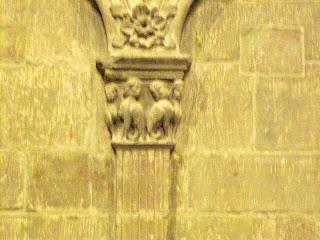 Fanciful capitals, St. Peter's Cathedral, Geneva
Fanciful capitals, St. Peter's Cathedral, Geneva Le Jet d'Eau - Water Fountain, Geneva, Swizerland
Le Jet d'Eau - Water Fountain, Geneva, Swizerland Reformation Wall, The Four Reformers, Bastion Park, Geneva CH
Reformation Wall, The Four Reformers, Bastion Park, Geneva CH St. Peter's Cathedral, John Calvin's Chair
St. Peter's Cathedral, John Calvin's Chair Prisoners of war, seated; sculpture, International Red Cross Red Crescent Museum, Geneva
Prisoners of war, seated; sculpture, International Red Cross Red Crescent Museum, Geneva Political prisoners, standing, sculpture, entry, International Red Cross and Red Crescent Museum, Geneva, Switzerland
Political prisoners, standing, sculpture, entry, International Red Cross and Red Crescent Museum, Geneva, Switzerland Symbols for International Red Cross and Red Crescent Museum, canopy at entry
Symbols for International Red Cross and Red Crescent Museum, canopy at entry Three-legged chair. Anti-personnel landmine symbol: UN, Geneva,Switzerland
Three-legged chair. Anti-personnel landmine symbol: UN, Geneva,Switzerland Dignitary entrance drive. United Nations, Geneva, Switzerland. Tourists around back.
Dignitary entrance drive. United Nations, Geneva, Switzerland. Tourists around back.  UN, Geneva CH, Main Conference Room.
UN, Geneva CH, Main Conference Room. Mural, European HQ, UN, Geneva CH
Mural, European HQ, UN, Geneva CH Mural, United Nations, European Headquarters, Geneva.
Mural, United Nations, European Headquarters, Geneva.  Cast bell, Japan Peace Monument, UN, Geneva, Switzerland
Cast bell, Japan Peace Monument, UN, Geneva, Switzerland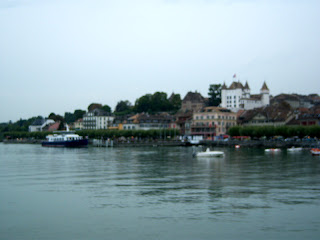 Nyon, Switzerland. Water view
Nyon, Switzerland. Water view Nyon Castle - Chateau, Nyon CH
Nyon Castle - Chateau, Nyon CH The Savoys' Castle with frescoes for performing arts, Nyon, square interior
The Savoys' Castle with frescoes for performing arts, Nyon, square interior Chateau, Nyon, Switzerland
Chateau, Nyon, Switzerland Chateau, smaller one, not face-lifted and lovely, Nyon Switzerland
Chateau, smaller one, not face-lifted and lovely, Nyon Switzerland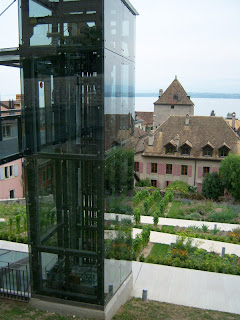 Nyon outdoor elevator, from hill Chateau to riverfront area, le Rive
Nyon outdoor elevator, from hill Chateau to riverfront area, le Rive Corinthian columns, Nyon, park area, Roman ruins, Switzerland
Corinthian columns, Nyon, park area, Roman ruins, Switzerland Sail late into Nyon, Switzerland
Sail late into Nyon, Switzerland Rowing on Lake Geneva, Nyon, Switzerland
Rowing on Lake Geneva, Nyon, Switzerland Shore fishing, Nyon, CH
Shore fishing, Nyon, CH Narrow in Nyon
Narrow in Nyon Very narrow in Nyon
Very narrow in Nyon Who needs plush
Who needs plush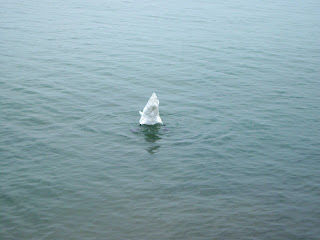 Leaving Nyon
Leaving Nyon Yverdon-les-Bains Castle, Pierre II of Savoy after 1260, now a museum, CH
Yverdon-les-Bains Castle, Pierre II of Savoy after 1260, now a museum, CH Spa tub, museum, Yverdon-les-Bains, Switzerland
Spa tub, museum, Yverdon-les-Bains, Switzerland Egyptian mummy of Nes-Shou, sarcophagus lid, 200 BC, pilfered out of its resting place for the amusement and edification of generations of gawkers.
Egyptian mummy of Nes-Shou, sarcophagus lid, 200 BC, pilfered out of its resting place for the amusement and edification of generations of gawkers.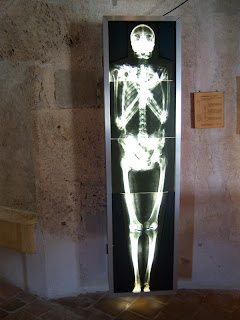 Mummy, Nes-Shou, exposed, Yverdon, Switzerland. Full body scan.
Mummy, Nes-Shou, exposed, Yverdon, Switzerland. Full body scan.  Embalmed Nes-Shou mummy, unlidded, Yverdun CH
Embalmed Nes-Shou mummy, unlidded, Yverdun CH Artifacts: fine arts of Celts and Romans and many cultures at Yverdon
Artifacts: fine arts of Celts and Romans and many cultures at Yverdon Carved furnishing, Yverdon. Do women figures predominate?
Carved furnishing, Yverdon. Do women figures predominate? Chair,Yverdon Castle. Pestalozzi era?
Chair,Yverdon Castle. Pestalozzi era?